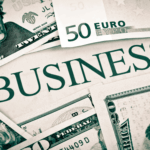Recent developments indicate an upward trend in prices for U.S. consumer goods, influenced by the increasing costs of tariffs. As companies exhaust their inventory, they transfer the financial burden to consumers. Despite a steady inflation rate, many businesses are facing challenges due to these pricing dynamics. Economic reports suggest a complex interplay between government policies and market responses, highlighting the need for ongoing examination and strategic pricing approaches.
Data from earlier this year reveal that specific product categories have experienced notable price hikes. For example, audio equipment saw a 14% increase, dresses rose by 8%, and there was a 5% climb in prices for tools, hardware, and supplies. These increases predominantly affected imported items, as evidenced by findings from the Bureau of Labor Statistics. Mark Mathews, chief economist at the National Retail Federation, noted,
“Over the past two years, goods inflation has been about zero. We are beginning to see goods inflation creep up,”.
How Are Retailers Responding to Tariffs?
Retailers are devising various strategies to respond to tariff pressures. Some have rushed to import goods before tariffs take effect, while others raise prices selectively to protect margins. An example is Costco, which has minimized its exposure to tariffs by adjusting its product offerings. Instead of relying on imported holiday items, Costco has shifted its focus to higher-value products, such as saunas and backyard sheds, to occupy floor space during its busiest seasons. CEO Ron Vachris elaborated in a recent earnings discussion, explaining adjustments made by the company to navigate these economic changes.
What Historical Context Pertains to Current Tariff Dynamics?
In the past, tariff discussions centered around theoretical impacts on consumer prices and inflation expectations. Historically, predictions have cautioned about inflated costs, yet recent data showcase retailers’ adaptive strategies. Current tariff rates have significantly increased compared to previous years, elucidating the policy’s tangible effects on U.S. consumer markets and business approaches.
Despite altering strategies, most businesses have reported a change in these efforts. Estimates from JPMorgan indicate a substantial rise in the average effective tariff rate, which currently stands at nearly 16%, significantly higher than the 2.3% rate observed at the end of the previous year. Projections suggest these rates might soar to between 18% and 20% by year’s end, further shaping the landscape of consumer goods pricing. Such considerations are central to understanding the complex environment businesses face today.
Furthermore, research by PYMNTS Intelligence highlights that 90% of goods firms had already increased their prices in the past year due to economic volatility, yet a significant portion saw decreased profit margins.
“Tariffs and other upstream supply chain pressures have compounded the issue, forcing merchants to pass on costs while still absorbing part of the burden themselves,” the report added.
Continued examination of tariff impacts reveals the nuanced influence on the retail sector and consumer behavior. The evolving economic conditions underscore the necessity for businesses to adapt creatively to regulatory changes and market fluctuations. Ultimately, consumers must carefully navigate these price adjustments, while companies strive to balance operational costs and market competitiveness.










